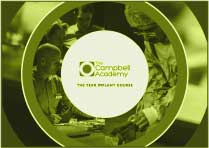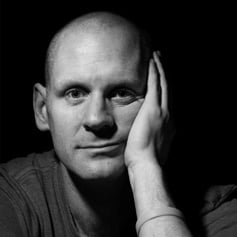
Although this may have come late to me in my career, where many people’s obsession with evidence in their pursuit of practice came at a much younger age, it’s a developing fanaticism which will see me through to the end of my career – however far away that is, and health permitting it’s a long, long time away.
The fire was further stoked with a very wonderful present from a dentist in Lincoln called Shaun Sellers who sent me a book called ‘The Patient Paradox’ written by a Glasgow GP who has been flag bearer for the use of proper evidence throughout medicine and general practice for many years. You can get the book here.
It is an extraordinary book and I will come back to it in later blogs as it continues to impact on my practice and alter my philosophy of patient care. There are many stories with this book of deep-seated beliefs in medicine which are simply not true and, when evidence is finally brought to bear upon them, it shatters a belief bubble with often devastating consequences of remorse. One particularly upsetting example is the use of steroids in patients who suffered major head trauma over many years in A&E departments in the UK. It was assumed that using steroids would reduce swelling in these patients and they were prescribed with the best will in the world and all the best intentions for many years without being properly tested.
In the end, when the studies were carried out measuring steroid usage in major head and neck trauma against no steroid usage, it was found that no steroid usage meant that many more of the patients lives than in the test group of steroid use. In her book McCartney suggest that up to 10,000 people died as a result of steroid usage in major head trauma and this can only have been utterly devastating for people who worked in that field, doing their very best day after day to try and look after people who had been in terrible accidents.
Sometimes when I consider situations such as this, and another situation in the book of sudden infant death syndrome and the long held advice to suggest babies should sleep on their fronts which was entirely without evidence, I wonder whether there is any point in applying evidence to something as insignificant as dentistry or the things we do in dentistry but, of course, it can be the only way to proceed with any aspect of health care. As I reflect on my time in implant dentistry, which is reaching its twenty year anniversary, I am horrified by the amount of procedures that are brought into my practice which have no clear evidence base whatsoever associated with them and at best have been brought in in good faith and at worst have been brought in with a commercial imperative.
We have so many opportunities in implant dentistry when new products come in to test them against existing ways of treating patients and we fail to do this, simply because it wasn’t sexy or there wasn’t money associated with it. For me that will now change entirely and with the group of people we have at our practice, we will question each other’s practice based on evidence available and, where no evidence is available, we will consider if there is any possible way to create it ourselves.
Towards the end of last year we became a primary research initiator (a name that I’ve invented for us but what it means is that we now have our own ethical approval within practice) A primary research initiator therefore does not need to associate themselves with a University to provide research as seems to have always been the way in UK dentistry. We are now able to produce research of our own and also can work in collaboration with other practices who can ‘piggy back’ off our ethical approval. Instantly this has led to opportunities for wonderful collaboration – we are at the early stages of working with a Professor of ENT in Glasgow to develop an index for CBCT interpretation of sinuses and to be able to test exactly when a GDP should refer to ENT with an abnormal sinus appearance. This should streamline things and make it much easier and have a benchmark situation that all can adhere to.
This is something very close to my heart. We are also looking at the possibility of collaborating with another university (name withheld at present) on the issue of consent in dentistry and record keeping. We have plans to look at studying steroids and their use in dentistry to see whether or not they are actually advantageous. Add this together with our already running prospective investigation into 20 anterior aesthetic cases and the stability of the aesthetics over time, our retrospective sinus grafting work of 331 implant at the present time in simultaneous sinus grafted sites, our maintenance study to demonstrate exactly how important maintenance is in long term implant survival in a primary care setting and a long term implant audit (now at 2,322 implants at last count).
Implant dentistry and dentistry as a whole is full of people arguing at the exceptional end which treatment modality other people should use because it ‘works in their hands’. I’m interested in what works in the hands of the 80% of competent dentists that I fall into, to give people recipes for patients that are predictable, as safe as possible and repeatable. We have much work to do.
(For Shaun – sometimes you drop a pebble and it creates an unstoppable avalanche! Thanks for the pebble, keep dropping)
Blog Post Number - 1202





Leave a comment